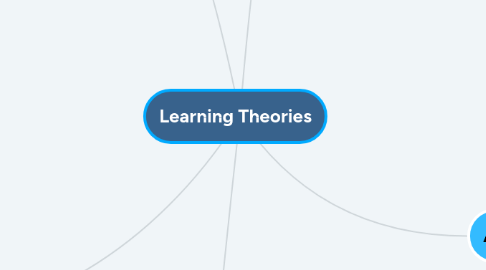
1. Connectivism
1.1. "New Learning Theory" ability to combine thoughts, theories, information to build knowledge
1.2. Technology is essential
1.3. Being connected during learning
1.4. Networking
1.5. Validating information
1.6. Classroom Example: Building a website to demonstrate learning, creating a classroom media to share thoughts/ideas
1.6.1. Personal Example: Creating business cards that provide social medias, networking workshops/events
2. Constructivism
2.1. Using previous knowledge and experiences to build on new ideas/information
2.2. Experiences guide learning
2.3. Further previous knowledge and new knowledge
2.4. Student- centered learning
2.5. Engagement. social interactions
2.6. Active process
2.6.1. Do something to learn something
2.6.1.1. Make connections
2.7. Classroom Example: Teacher gives student a pre-test on the lesson to get a better understanding of what is already learned- allowing the students to choose what should be the main focus
2.7.1. Personal Example: Taking the skills of making cookies and brownies then trying to combine the recipe to make cookie brownies
3. Social Learning Theory
3.1. Observing and modeling behaviors in a given environment
3.2. Mental health plays a huge role to ensure the learning process is taking place
3.3. Behaviors may not necessarily change
3.4. Attention, retention, reproduction, motivation
3.5. Individuals must model behaviors they want to take on for changes to progress
3.5.1. Positive influences, role models
3.6. Albert Bandura
3.6.1. Bodo Doll
3.6.1.1. Children exhibit same behaviors that are observed by parents
3.7. Classroom Example: Creating a simulation for students to complete after observing the teacher, following with an assignment for students to further their knowledge.
3.7.1. Personal Example: Adolescents setting a time to complete homework without any distractions- this behavior can be modeled for younger siblings.
4. Attribution Theory
4.1. Attempt of interpreting the causes of behaviors from an individual based on experience, feelings, beliefs
4.2. Analyzing the decisions and outcomes
4.3. Must raise self-awareness
4.4. Capacity and Motivation
4.5. Fritz Heider, Bernard Weiner
4.6. External vs. Internal Loss of Control
4.6.1. External: Independent on individual's behavior- success/failure
4.6.1.1. Internal: Related to individual's behaviors- control of destiny
4.7. Stable vs. Unstable Causes of Outcome
4.7.1. Stable: ability and task difficulty
4.7.1.1. Unstable: Effort and luck
4.8. Controllable vs. Uncontrollable Behaviors
4.8.1. Controllable: Capability to influence
4.8.1.1. Uncontrollable: Limited ability to influence
4.9. Classroom Example: Completing a lesson and providing homework, teacher reviews assignment, answers questions, and provides feedback- Good attempt vs. Try again
4.9.1. Personal Example: Understanding what is not working for your employee, making adjustments to best suit their success- What methods are challenging? What can I do to help you stay focused?
5. Cognitivism
5.1. Understanding new information and the mental processes of how it was learned
5.2. Ask questions about the thinking process
5.3. Valuableness of knowledge
5.4. Information processor
5.5. Previous knowledge meets new knowledge
5.6. Schema
5.6.1. Where knowledge is stored
5.6.1.1. Makes connections
5.7. Classroom Example: Teacher can create an interactive game, if the student is incorrect they must provide the correct answer- building new knowledge that may have not been learned fully
5.7.1. Personal Example: When an individual is feeling upset, they should stop think about what is causing them to feel this way instead of continuing to be upset.
